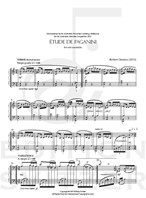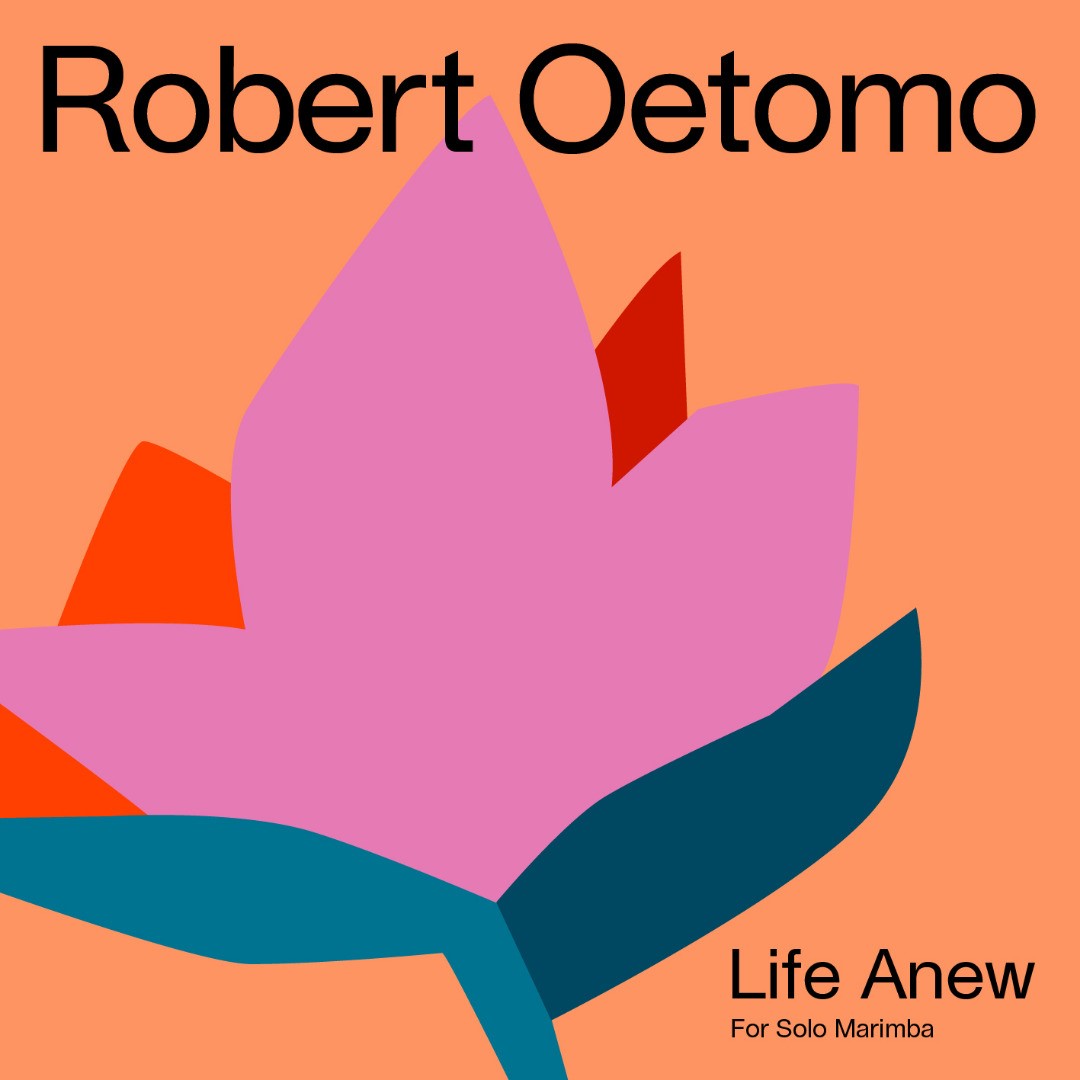
Étude de Paganini
Composer: Robert Oetomo
Instrument: Marimba
Level: Advanced
Published: 2015
Price: €16.00
Item details
-
Description +
-
Duration: 8 min.
Niccolò Paganini (1782–1840) is arguably the most celebrated violin virtuoso in the nineteenth century. He was a master of the violin and also a composition genius, producing an enormous and unprecedented output for the violin repertoire that forever changed the art of violin playing.
Many composers after Paganini took inspiration from the theme of his best-known composition, Caprice No. 24 in a minor from 24 Caprices for Solo Violin, Op. 1. Liszt was the first to do so, followed by many other prolific composers such as Brahms, Rachmaninoff and Lutosławski to name a few. Like Paganini, the composers mentioned above are also masters and virtuosos of their instrument.
I took Gary Wain’s Paganini Variations (1983–1994) as core inspiration in writing my composition, Étude de Paganini. I loosely followed the structure of Wain’s Paganini Variations, in that there are nine variations following the theme. The nine variations in Étude de Paganini are as follows:
THEME: Introduction – Tempo giusto
VARIATION I – A tempo
VARIATION II – Adagio cantabile con libertá
VARIATION III – Pesante e appassionato
VARIATION IV: Chorale – Grave cantabile e sostenuto
VARIATION V – Sempre ben ritmato
VARIATION VI – Rapido con forza
VARIATION VII – Prestissimo
VARIATION VIII: Moto perpetuo – Allegro con moto
VARIATION IX: Coda – Lento tranquillo e malinconico
In writing Étude de Paganini, I also wanted to pay homage to specific marimbists (who are also composers) who have made a great impact on the development of the modern marimba and its repertoire; in similar ways in which Paganini did for the violin. In doing so, I have written specific variations in the style of those individuals.
Étude de Paganini is commissioned by the Australian Percussion Academy, Melbourne for the Australian Marimba Competition 2015. With enormous gratitude, this work is dedicated to my first percussion teacher, Gary Wain.
Robert Oetomo
Performer's Notes
Variation III – Pesante e appassionato
Realise and differentiate between the quaver and semiquaver appoggiaturas. These appoggiaturas should function accordingly as a quaver/semiquaver upbeat to the first or third beat of a bar.
Variation IV: Chorale – Grave cantabile e sostenuto
The lines shown in the right hand of bars 66 and 67 indicate the direction of the melodic voice line.
-
-
Instrumentation +
-
Marimba (5-octave)
-
-
About the composer +
-
Indonesian-born Australian percussionist and composer Robert Oetomo (b. 1988) studied his Master of Music (Künstlerische Ausbildung) degree in performance at the Staatliche Hochschule für Musik und Darstellende Kunst Mannheim, where he received highest distinction for his final graduation recital in 2014. He completed his Bachelor of Music (Performance) Honours Class I at the Sydney Conservatorium of Music, Australia in 2010. His previous teachers include Professor Dennis Kuhn, Jasmin Kolberg, Claire Edwardes, Daryl Pratt, Richard Miller and Gary Wain. He has accumulated many national and international awards including third prize in the Vibraphone category of the 9th Percussive Arts Society Italy International Percussion Competition in 2011, the ‘Just Percussion Marimba Prize’ at the Australian Percussion Gathering (APG) 2010, first prize in both the Open Marimba and Open Vibraphone categories of the 2010 Australian Percussion Eisteddfod and second prize at the 2008 Melbourne Symphony Orchestra Snare Drum Award. He also won the 2010 Sydney Conservatorium Percussion Concerto Competition, and was finalist in the 2012 Yamaha Music Foundation Europe Scholarship Competition.
A versatile percussionist, Robert has performed with different orchestras and ensembles including the Australian Opera and Ballet Orchestra, the Württembergisches Kammerorchester Heilbronn, the Kurpfälzischen Kammerorchester Mannheim, the Australian Youth Orchestra, Synergy Percussion and Mannheimer Schlagwerk. He presented his paper, ‘The Transcription of J. S. Bach’s Unaccompanied Cello Suites for the Modern Marimba,’ at APG 2010 Symposium ‘Moving Ground – The Changing Face of Percussion’. Robert was invited to perform his work, The Legend of the Golden Snail, at the Gala Concert of APG 2010, performing with highly acclaimed percussionists including Steve Schick, Sylvio Gualda and Kuniko Kato.
As a composer, Robert passionately advocates the development of percussion music. He has composed numerous works for percussion which have been performed all over the world. His first symphonic work, Spirit of The Dreaming with solo didgeridoo, was premiered at the ‘2008 Aurora Music Festival’ in Sydney, Australia. Later that year, it was performed again with renowned didgeridoo soloist, William Barton. Robert was selected for the 2010 Ku-Ring-Gai Philharmonic Orchestra Composers' Workshop program during which he composed his new orchestral work, Reflections on an Island’s Landscape, under the mentorship of composer Nigel Butterley and John Peterson. His works are published by Edition Svitzer and Tapspace Publications. Robert is an Encore Mallets, Inc. endorser.
-
-
Reviews +
-
Percussive Notes, November 2016
Paganini was a famed violinist of the 19th century, and was known not only for his virtuoso performances, but also for several compositions. His most famous work was his set of variations, which to this day appears on numerous recital and concert programs.
This is an excellent publication, featuring a theme and nine variations. One would think that, because of the title, it would be an arrangement. However, Robert Oetomo cleverly used the original themes as germs and created modern-day techniques as a feature in each variation. Some of these include harp-like arpeggios for chords, rhythmic groups of eighth notes, which accelerate then slow back down to the original speed, damping specified notes with the body, and unusual note groupings within time signatures (9/8 grouped 3-2-2-2). The titles of the variations are primarily tempo markings. The work is written for a 5-octave instrument, and the writing explores the full-range of the instrument. In this reviewer’s opinion this is a “home run.” Very expressive materials and advanced technical sections make this an impressive work. With the tonal and harmonic material, the solo will have excellent audience appeal.
—George Frock
-
-
Credits +
-
Front Cover graphics and layout: Evi O.
Engraving: Robert Oetomo
Printed in Copenhagen, Denmark
Copyright © Edition SVITZER
www.editionsvitzer.com
-





